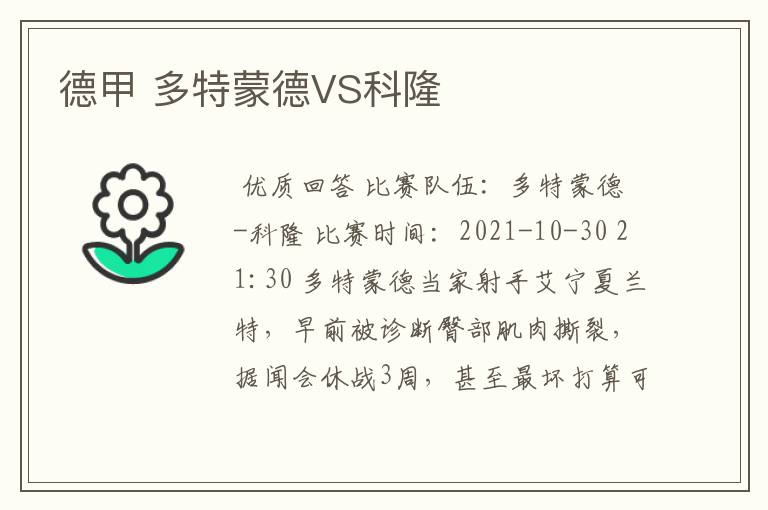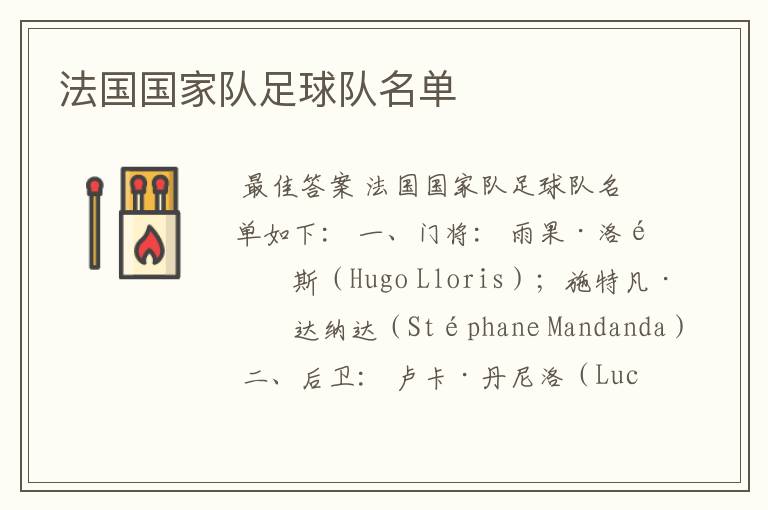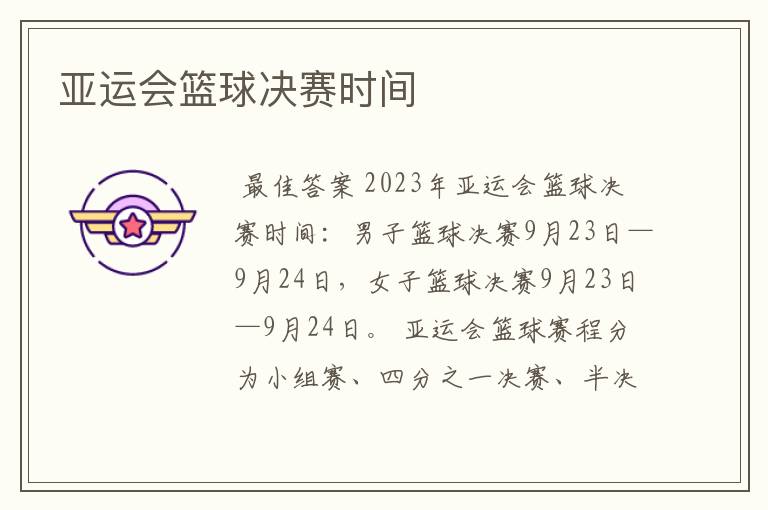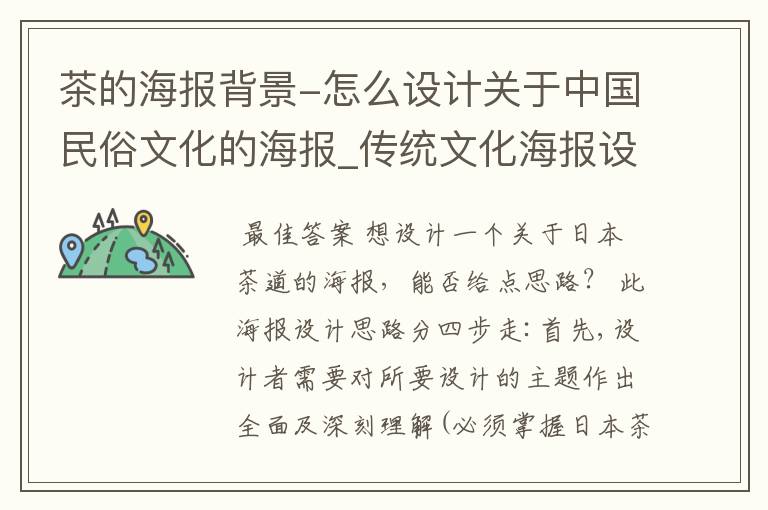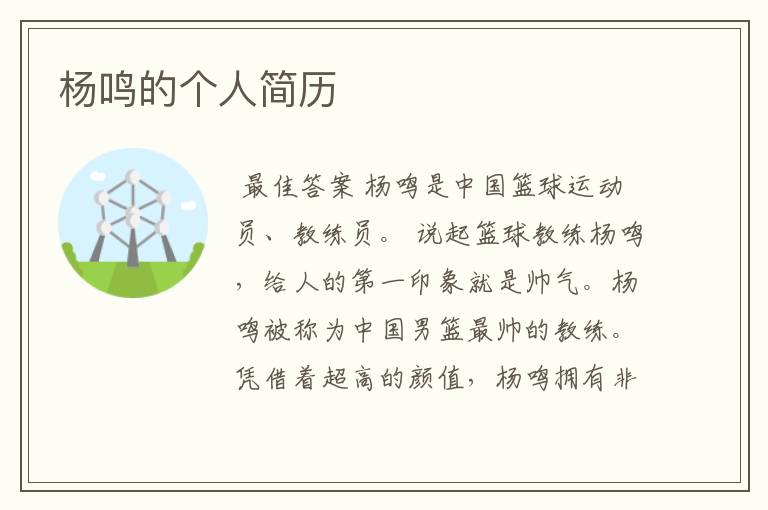〖西甲特拉普〗特拉普斯特
今天运困体育就给我们广大朋友来聊聊西甲特拉普,希望能帮助到您找到想要的答案。
「双语太空播报」发现日:7颗地球大小的行星
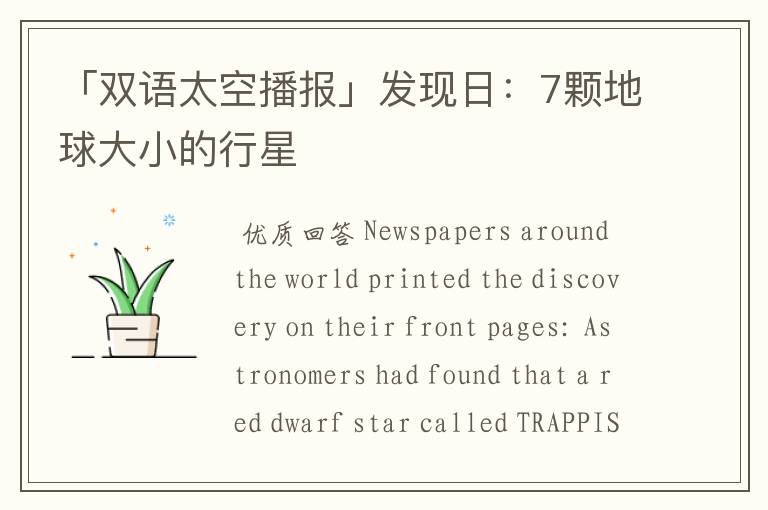
优质回答Newspapers around the world printed the discovery on their front pages: Astronomers had found that a red dwarf star called TRAPPIST-1 was home to a close-knit family of seven Earth-size planets. NASA announced the system Feb. 22, 2017.
Using telescopes on the ground and in space, scientists revealed one of the most unusual planetary systems, yet found beyond our Sun and opened the tantalizing question: Are any of these worlds habitable – a suitable home for life
世界各地的报纸都在头版刊登了这一发现:天文学家发现一颗名为特拉普斯特-1的红矮星是一个由七颗地球大小的行星组成的紧密家族的家园。NASA于2017年2月22日宣布了该系统。
利用地面和太空望远镜,科学家们揭示了迄今为止在太阳之外发现的最不寻常的行星系统之一,并提出了一个诱人的问题:这些星球中是否有一个适合居住——适合生命的家园?
Five years later, the planets are still enigmatic. Since the first announcement, subsequent studies have revealed that the TRAPPIST-1 planets are rocky, that they could be almost twice as old as our solar system, and that they are located 41 light-years from Earth.
But a real game-changer will be the recently launched James Webb Space Telescope. Larger and more powerful than any previous space telescope, Webb will look for signs of atmospheres on the TRAPPIST-1 planets.
“That folks are even able to ask the question about whether a planet around another star is habitable – that just boggles my mind,” said Sean Carey, manager of the Exoplanet Science Institute at NASA’s Jet Propulsion Laboratory in Southern California. Carey was part of the team that helped discover some of the TRAPPIST-1 planets using data from the now-retired Spitzer Space Telescope.
五年后,这些行星仍然神秘莫测。自第一次宣布以来,随后的研究表明,特拉普斯特1号行星是多岩石的,它们的年龄可能是我们太阳系的两倍,它们距离地球41光年。
但真正改变局面的将是最近发射的詹姆斯·韦伯太空望远镜。韦伯比以往任何一台太空望远镜都更大、更强大,他将在特拉普斯特1号行星上寻找大气层的迹象。
南加州NASA喷气推进实验室系外行星科学研究所经理肖恩·凯里(Sean Carey)说:“人们甚至可以问一个关于另一颗恒星周围的行星是否适合居住的问题——这让我感到不可思议。”。凯里是团队的一员,该团队利用现已退役的斯皮策太空望远镜提供的数据帮助发现了一些特拉普斯特-1行星。
A prime target for Webb is the fourth planet from the star, called TRAPPIST-1e. It’s right smack in the middle of what scientists call the habitable zone, also known as the Goldilocks zone. This is the orbital distance from a star where the amount of heating is right to allow liquid water on the surface of a planet.
Though the planets are tightly packed around TRAPPIST-1, the red dwarf star is not only far cooler than our Sun, it is less than 10% its size. (In fact, if the entire system were placed in our own solar system, it would fit within the orbit of our innermost planet, Mercury.)
Searching for Atmospheres
The habitable zone is just a first cut. A potentially habitable planet also would require a suitable atmosphere, and Webb, especially in its early observations, is likely to gain only a partial indication of whether an atmosphere is present.
“What is at stake here is the first atmosphere characterization of a terrestrial Earth-size planet in the habitable zone,” said Michaël Gillon, an astronomer at the University of Liege in Belgium and the lead author of the study that revealed the seven sibling planets in 2017.
Measurements with the Hubble Space Telescope added more information about habitability. While Hubble does not have the power to determine whether the planets possess potentially habitable atmospheres, it did find that at least three of the planets – d, e, and f – do not appear to have the puffy, hydrogen-dominated atmospheres of gas giants, such as Neptune, in our solar system. Such planets are thought to be less likely to support life.
That leaves open the possibility of “the atmospheres’ potential to support liquid water on the surface,” said Nikole Lewis, a planetary scientist at Cornell University.
More on TRAPPIST-1
Lewis is part of a science team that will use the Webb telescope, which will view the heavens in infrared light, to hunt for signs of an atmosphere on TRAPPIST-1e, the one with the Goldilocks perch in the habitable zone.
“The hope is that we see carbon dioxide, a really strong feature, right at the wavelengths [detectable by] Webb,” she said. “Once we know where there are little things peaking up above the noise, we can go back and do a much higher resolution look in that area.”
The size of the TRAPPIST-1 planets also might help to strengthen the case for habitability, though the research is far from conclusive.
They’re comparable to Earth not just in diameter but mass. Narrowing down the mass of the planets was possible, thanks to their tight bunching around TRAPPIST-1: Packed shoulder to shoulder, they jostle one another, enabling scientists to compute their likely range of mass from those gravitational effects.
“We have gotten some really good information about their size – mass and radius,” said Cornell’s Lewis. “That means we know about their densities.”
韦伯的主要目标是该恒星的第四颗行星,名为特拉普斯特-1e。它正好位于科学家们称之为“宜居区”的中间地带,也被称为“金发姑娘区”。这是一颗恒星的轨道距离,该恒星的热量足以让液态水进入行星表面。
尽管行星紧紧围绕着TRAPPIST-1,但红矮星不仅比我们的太阳冷得多,而且还不到其大小的10%。(事实上,如果将整个系统放置在我们自己的太阳系中,它将适合我们最深处的行星水星的轨道。)
寻找大气
可居住区只是第一个切入点。一颗可能宜居的行星也需要一个合适的大气层,而韦伯,尤其是在其早期的观测中,很可能只获得了大气层是否存在的部分迹象。
比利时列日大学(University of Liege)的天文学家米夏埃尔·吉隆(Michaël Gillon)说:“这里的利害关系是,在宜居区内首次对一颗地球大小的行星进行大气表征。”他是2017年揭示七颗兄弟行星的研究的主要作者。
哈勃太空望远镜的测量增加了更多关于宜居性的信息。虽然哈勃没有能力确定这些行星是否具有潜在的宜居大气层,但它确实发现至少三颗行星——d、e和f——在我们的太阳系中似乎没有海王星等气态巨行星的蓬松、以氢为主的大气层。这类行星被认为不太可能维持生命。
康奈尔大学(Cornell University)的行星科学家尼科尔·刘易斯(Nikole Lewis)说,这就为“大气支持表面液态水的潜力”留下了可能性。
更多关于TRAPPIST-1的信息
刘易斯是一个科学团队的成员,该团队将使用韦伯望远镜(Webb telescope)在红外线下观察天空,在特拉普斯特-1e号上寻找大气迹象。特拉普斯特-1e号上的金发姑娘栖息在宜居区。
她说:“我们希望看到二氧化碳,这是一个非常强大的特征,正好在韦伯(可探测)的波长处。”。“一旦我们知道噪音上方有小东西达到峰值,我们就可以回去在该区域进行更高分辨率的查看。”
TRAPPIST-1行星的大小也可能有助于加强宜居性的理由,尽管这项研究远未得出结论。
它们不仅在直径上,而且在质量上与地球相当。由于行星在TRAPPIST-1周围紧密聚集,缩小其质量是可能的:它们肩并肩地挤在一起,相互推挤,使科学家能够根据这些引力效应计算出它们可能的质量范围。
康奈尔大学的刘易斯说:“我们得到了一些关于它们的大小——质量和半径——的非常好的信息。”。“这意味着我们知道它们的密度。”
The densities suggest the planets might be composed of materials found in terrestrial planets like Earth.
Scientists use computer models of possible planetary atmosphere formation and evolution to try to narrow down their possible composition, and these will be critical for the TRAPPIST-1 planets, Lewis said.
“The great thing about the TRAPPIST system is that it is going to allow us to refine those models either way – whether they will end up being just barren rock or end up being potentially habitable worlds,” she said.
For Gillon, another great thing about the system is the reach of the TRAPPIST-1 system. “I’ve seen TRAPPIST-1 included in some artistic works; I’ve seen it in music, sci-fi novels, comics,” he said. “That’s really something we have enjoyed during these five years. It’s like this system has a life of its own.”
这些密度表明,这些行星可能由地球等类地行星中发现的物质组成。
刘易斯说,科学家们利用可能的行星大气形成和演化的计算机模型,试图缩小其可能的组成范围,这对特拉普斯特1号行星至关重要。
“TRAPPIST系统的伟大之处在于,它将允许我们以任何方式改进这些模型——不管它们最终是贫瘠的岩石还是潜在的宜居世界,”她说。
对于吉隆来说,该系统的另一个伟大之处是TRAPPIST-1系统的覆盖范围。他说:“我在一些艺术作品中看到了TRAPPIST-1,在音乐、科幻小说、漫画中也看到过。”。“这是我们在这五年中真正享受到的东西。就像这个系统有自己的生命。”
啤酒的酒精度是多少
优质回答啤酒的酒精度数通常在2%到5%之间。
啤酒的酒精度数是由其发酵过程中酵母菌将麦芽糖转化为酒精和二氧化碳的效率决定的。一般来说,大部分啤酒的酒精度数都在2%到5%之间,但也有一些特殊类型的啤酒,如比利时的特拉普斯特啤酒和美国的巴雷尔老化啤酒,其酒精度数可以达到10%甚至更高。这些啤酒通常口感更为浓烈,适合慢慢品味。
今天的内容先分享到这里了,读完本文《〖西甲特拉普〗特拉普斯特》之后,是否是您想找的答案呢?想要了解更多,敬请关注www.zuqiumeng.cn,您的关注是给小编最大的鼓励。
本文来自网络,不代表本站立场,转载请注明出处:https://www.zuqiumeng.cn/wenda/461770.html
